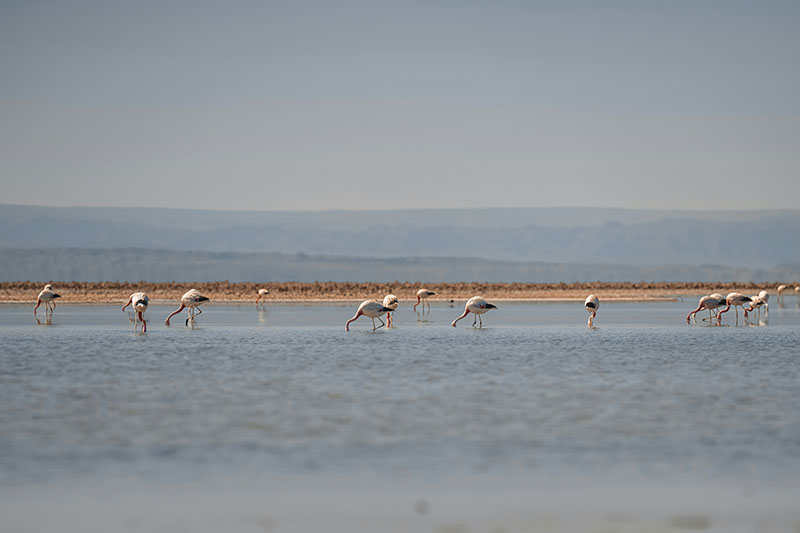Dry Andes study gives insight into lithium mining
US researchers have sampled water sources in Chile, Argentina and Bolivia to provide data on the water cycles used in lithium mining.

Flamingos walking across a body of water in Salar de Atacama, San Pedro de Atacama, Chile
© Unsplash/Mauro LimaThe use and evaporation of water is essential for lithium mining.
When rainwater or snowmelt move through ash layers, it settles in a flat basin as a brine of water and lithium.
Due to its density, the brine settles below fresh surface water, creating a unique and fragile ecosystem – most commonly seen with pink flamingos inhabiting it.
Deciphering the difference between groundwater and surface water will help understand water cycles in arid environments, and both are critical to combat climate change, claims the paper.
The study presents a novel method to differentiate these two bodies of water. Using tritium (3H), and the ratio between deuterium (2H) and an oxygen isotope (18O), the study can decipher where the water came from, how old it is, trace its interaction with the landscape and find the evaporation rate.
The growing global demand for critical minerals such as lithium and water in those environments emphasises the importance of this research.
It is hoped that the study will improve the management of water resources and help understand water cycles in arid environments.







